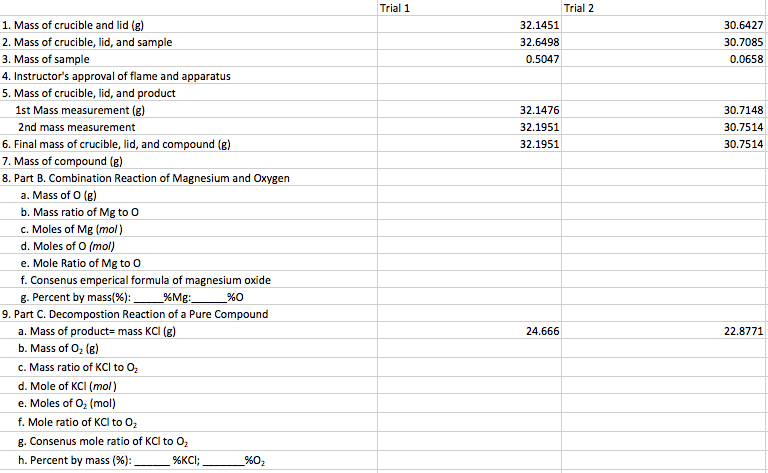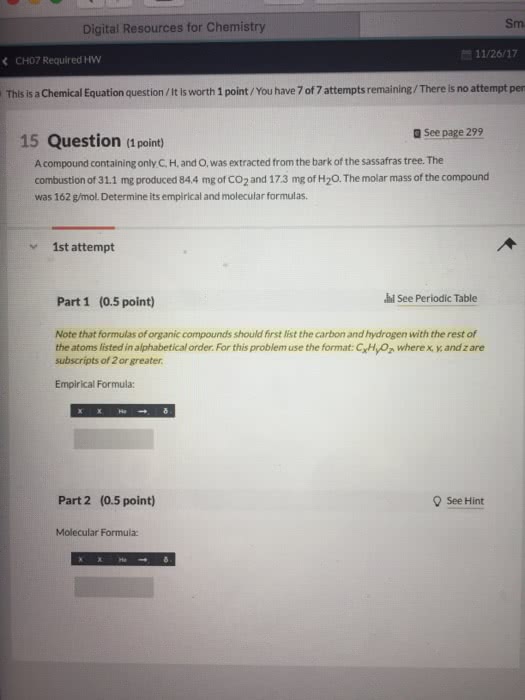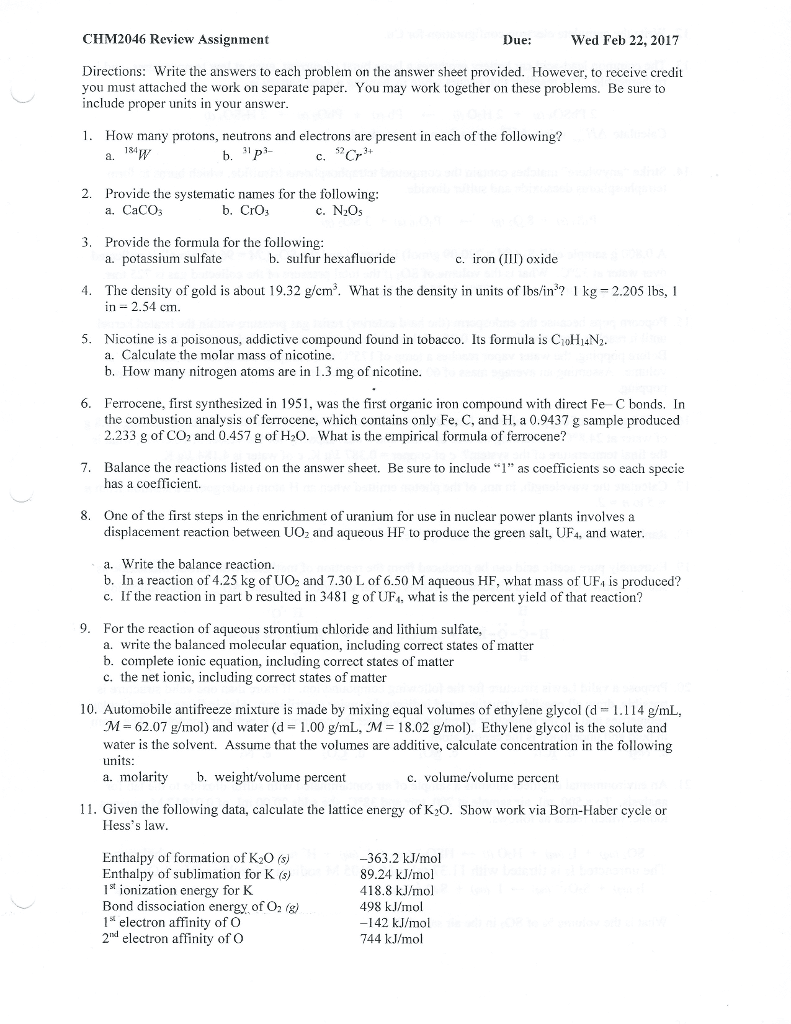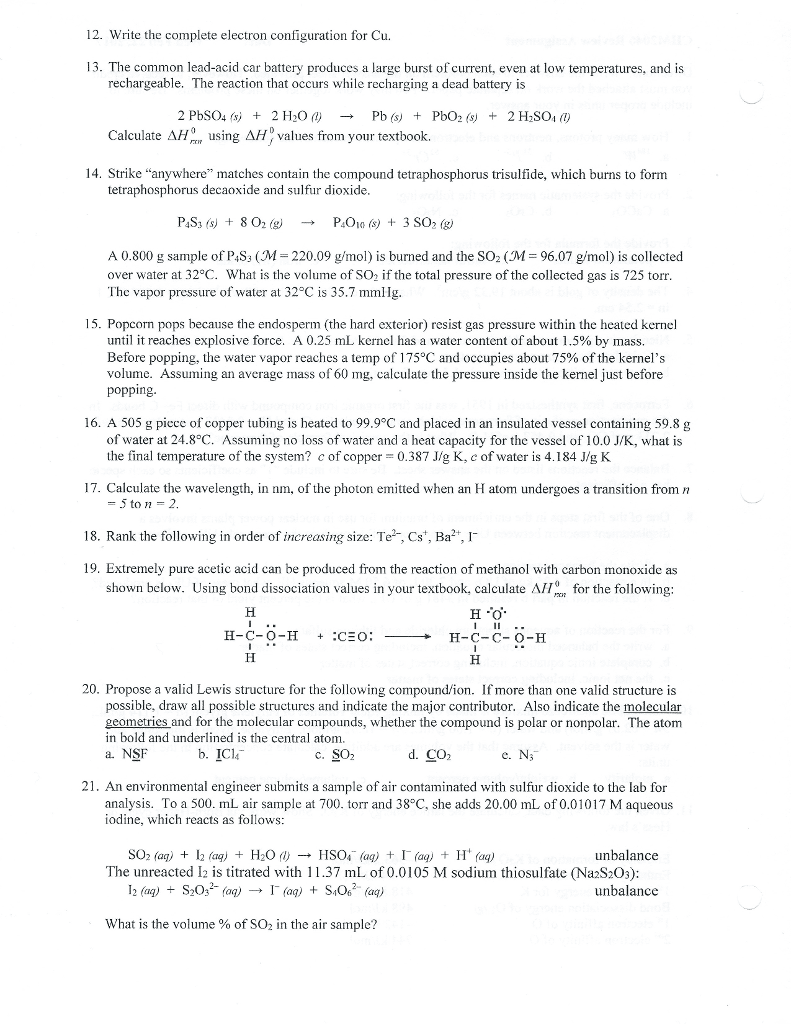CHEM 11H Lecture Notes - Lecture 2: Molar Mass, Chemical Equation, Stoichiometry
Document Summary
Ex: a compound contains only c, h, and o. Combustion of 1068 mg of the compound yields. 1068 mg compound 1601 mg co2 get info on c. 495 mg h2o get info on h. Subtract mass c and h get info on o. O: subtract grams of c and grams of h. Mass of o: 1068 - (0. 43670 + 0. 05534) = 0. 576 g. C0. 43670h0. 05534o0. 0360 then divide by smallest number (0. 0360) c1. 01h1. 53o1. 1 frame + 3 wheel + 2 pedals + 1 seat 1 tricycle. Multiply by two to get whole numbers c2h3o2 empirical formula. Molar mass of empirical formula = 2(12. 011) + 2(1. 008) + 2(15. 999) = 59. 044 g/mol n = molar mass/molar mass of empirical formula = 176. 1/59. 044 = 2. 983 3. Multiply empirical formula by n (c2h3o2) * 3 = c6h9o6 molecular formula. Stoichiometry - calculations of relative quantities of reaction and products in chemical reactions. A balanced chemical equation is like a detailed recipe or an instruction manual.





